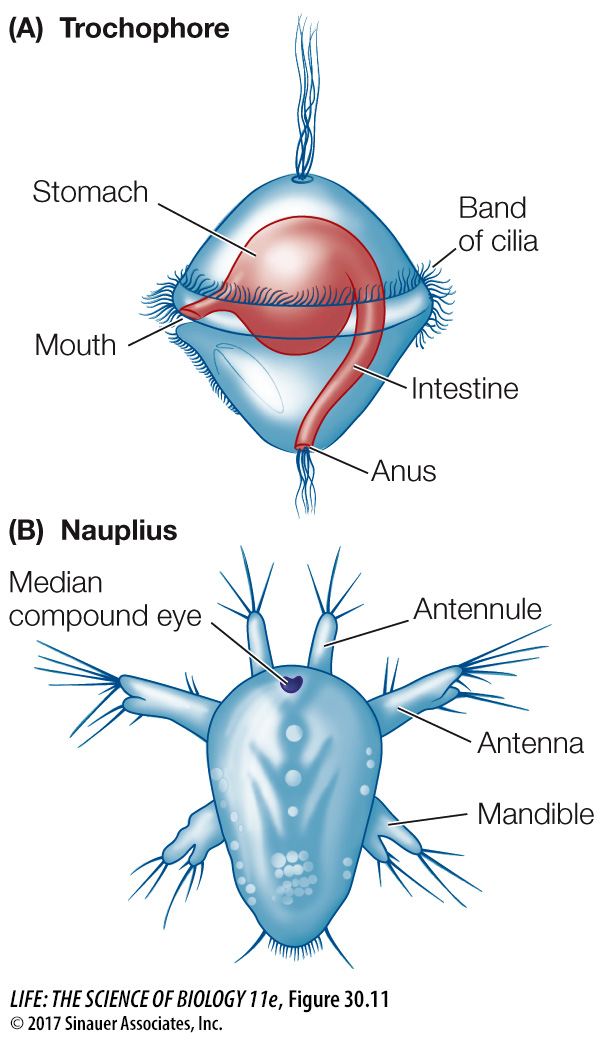Most animal life cycles have at least one dispersal stage
At some time during their lives, most animals move, or are moved, so few animals die exactly where they were born. Movement of organisms away from a parent organism or from an existing population is called dispersal.
Animals that are sessile as adults typically disperse as eggs or larvae. Most sessile marine animals discharge their eggs and sperm into the water, where fertilization takes place. A larva soon hatches and floats freely in the plankton, where it filters small food items from the water. Many animals that live on the seafloor, including polychaete worms and mollusks, have a radially symmetrical larval form known as a trochophore (Figure 30.11A). Other animals, such as crustaceans, have a bilaterally symmetrical larval form called a nauplius (Figure 30.11B). Both types of larvae feed for some time in the plankton and may travel long distances before settling on the ocean floor and transforming into adults.

646
Other animal species that are motile as adults disperse when they are mature. A caterpillar, for example, may spend its entire larval stage feeding on a single plant, but after it metamorphoses into a flying adult—